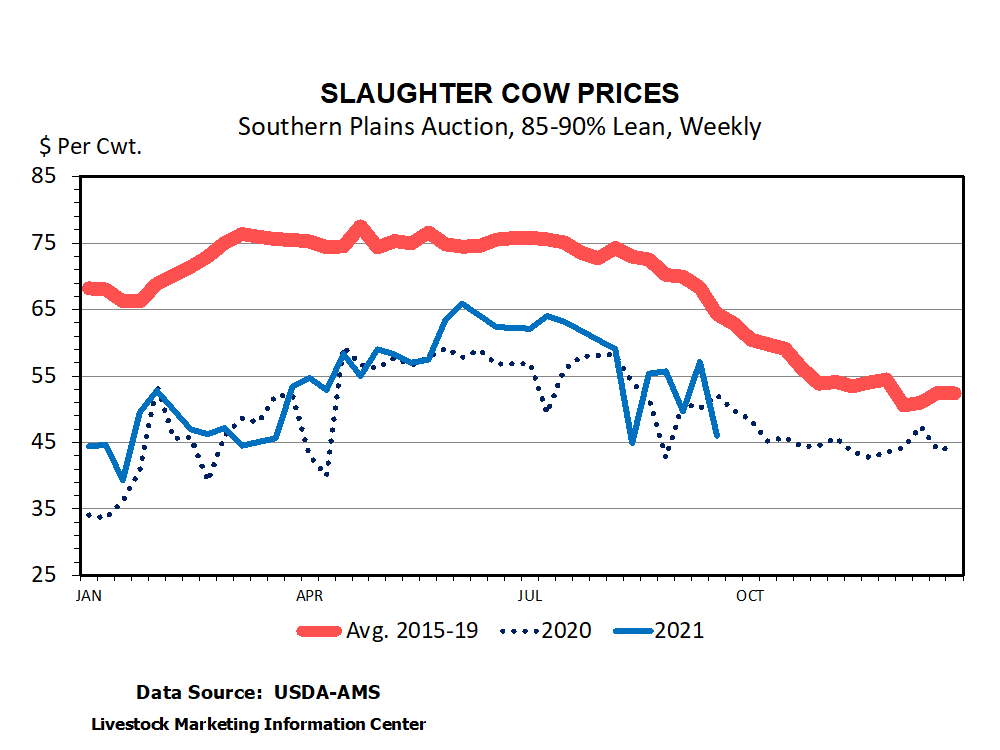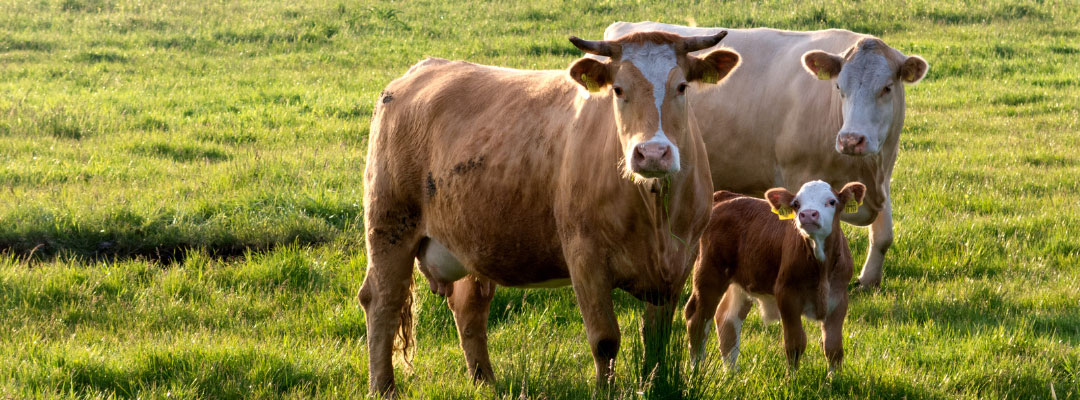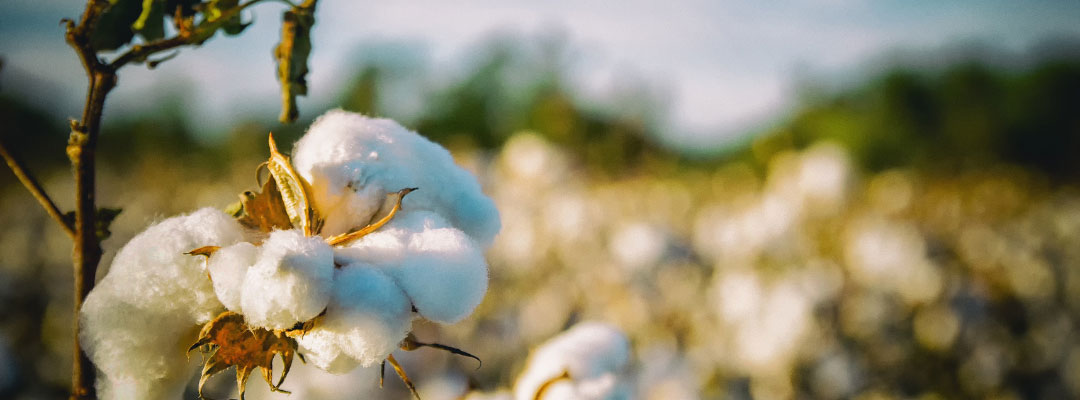Fall is here and cow prices have begun to decline from their summer seasonal highs. Cull cow prices in the Southern Plains that hit $64 mid-year have given back about 22 percent of that price as of last week. Over the last five years, cow prices have declined by about one-third from mid-year to November.

Cow prices normally decline this time of the year because culling picks up across the country. Beef cow culling normally hits its annual peak in October-November each year. This year, beef cow slaughter remains well above last year (up 10 percent), likely encouraged by drought in the West. Dairy cow culling normally peaks in January-February and again late in the year. Beef and dairy cow sales, increasing at the same time in the Fall, combine to force lower cull prices.
A couple of good questions remain for the Fall. Did the surge in beef cow culling over the Summer pull ahead cow slaughter so there are fewer to go to market this Fall? Will high feed costs and struggling milk prices push more dairy cow culling? A long-used strategy has been to buy cows (or keep some cows) at depressed prices in the Fall to take advantage of seasonal price increases the next Spring. A smaller beef cow herd will likely support higher cow prices in 2022, but it will be important to consider high feed costs in this strategy.
Anderson, David. “Cow Prices Start Seasonal Slump.” Southern Ag Today 1(42.2). October 12, 2021. Permalink


